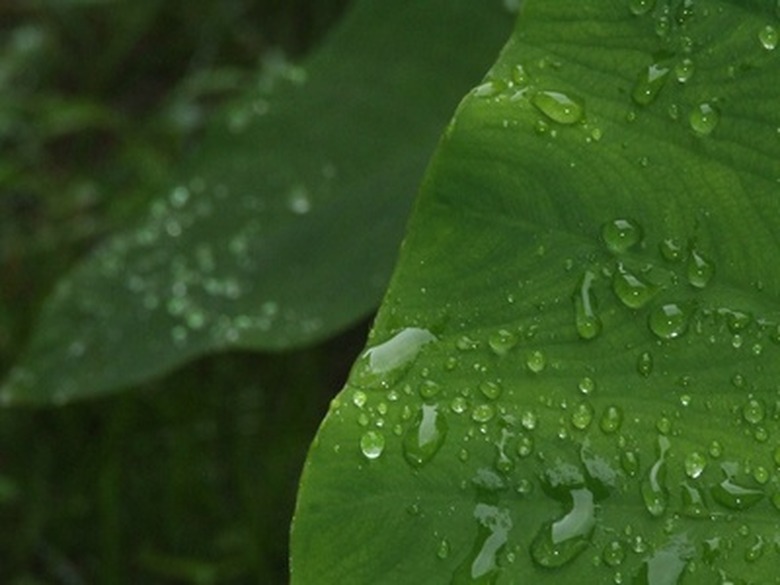Plants That Look Like Elephant Ears
There are more than 1,800 species in the Araceae family, and many of them look very similar to the elephant ears plant (Xanthosoma sagittifolium). Provide a fertile, moist soil and a frost-free environment for the tropical plants with large, elephant ear-like leaves. Plant their firm underground tubers in the garden or in containers alongside flowering and finely textured plants for a dynamic display. Just make sure you lift the tubers from the soil and store them indoors if you garden in regions where temperatures drop below freezing for more than a couple days each winter.
Alocasia
Within the Alocasia genus are 70 species that grow as tropical herbs, usually with large leaves shaped like elephant ears or huge arrowheads. Giant taro (Alocasia macrorrhizos), known for a paste made from boiling its rhizome roots thoroughly, can grow as tall as 12 to 15 feet. The leaf blades range in size from 2 to 5 feet in length and width. The industrial-looking metallic taro (Alocasia plumbea) bears slightly smaller leaves with a dark glossy green or bronze color.
- There are more than 1,800 species in the Araceae family, and many of them look very similar to the elephant ears plant (Xanthosoma sagittifolium).
- Within the Alocasia genus are 70 species that grow as tropical herbs, usually with large leaves shaped like elephant ears or huge arrowheads.
Colocasia
Gardeners often plant Colocasia species in warm, wet soils such as near or in an ornamental pond. These plants can spread their roots and become invasive weeds in some tropical locations around the world. There are only a few species of Colocasia, the most famous being wild taro (Colocasia esculenta). Its tuber roots and leaves are a food staple in many cultures of southeastern Asia and the Pacific Islands. From an ornamental standpoint, the leaves are thin and large, often marked with mottled spots or streaks on a contrastingly colored petiole stem. Another large-sized species is Colocasia gigantea.
Xanthosoma
The botanical genus Xanthosoma comprises nearly 70 species of herbs that are native to the New World Tropics, unlike Alocasia and Colocasia. Often these plants are called "arrowheads" to help distinguish them from the Asian and Pacific types of taro. Two species display particularly large leaves: malanga (Xanthosoma maffafa) and arrowhead (Xanthosoma sagittifolium). The former's leaves reach 2 to 5 feet in size. The sap is irritating to skin and eyes and any plant parts eaten must also be thoroughly cooked before consumption. Arrowhead can grow to 9 feet tall.
- Gardeners often plant Colocasia species in warm, wet soils such as near or in an ornamental pond.
- Often these plants are called "arrowheads" to help distinguish them from the Asian and Pacific types of taro.
References
- "Tropical Flowering Plants;" Kirsten Albrecht Llamas; 2003
- "The Tropical Look;" Robert Lee Riffle; 1998
- International Aroid Society: The Genus Alocasia
- International Aroid Society: Colocasia gigantea
